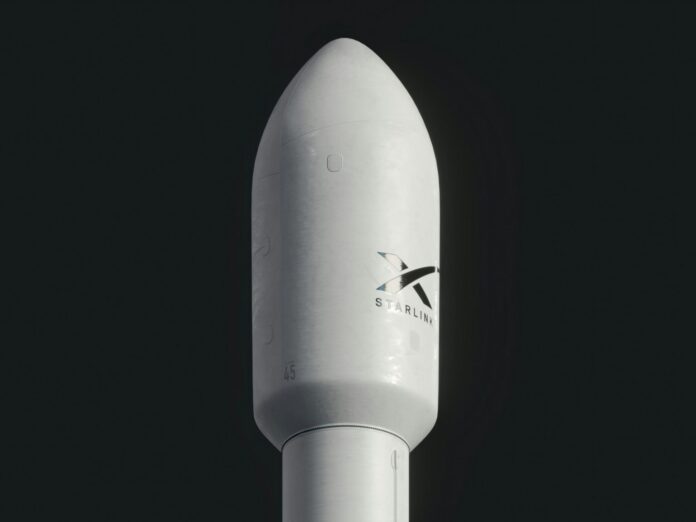O2 has forged a new multi-year partnership with Starlink Direct-to-Cell to boost enterprise connectivity and connect remote assets.
For enterprise leaders – especially those operating in logistics, utilities, construction, and agriculture – the promise of ubiquitous connectivity has often stalled at the edge of the map. Digital transformation strategies, particularly those involving IoT and remote asset management, usually collapse in rural ‘not spots’ where terrestrial mobile networks are economically unviable.
Virgin Media O2 has announced a move to address this business challenge. The plan will leverage Starlink’s satellite-to-mobile technology to enhance rural network coverage, effectively plugging the gaps in digital infrastructure.
This partnership is part of a broader shift towards hybrid networks, where terrestrial 4G/5G and Low Earth Orbit (LEO) satellites converge to create a persistent connectivity layer. For enterprises, this moves beyond a simple consumer benefit and opens up new possibilities for managing remote operations and ensuring workforce safety.
The new solution, to be named O2 Satellite, will be powered by Starlink’s constellation. Virgin Media O2 is the first UK operator to utilise Starlink’s system, which involves over 650 LEO satellites, to deliver connectivity directly to devices using a portion of O2’s licensed mobile spectrum.
The initial connectivity service offering is key for enterprise leaders. The service will initially deliver messaging and data services. While not high-bandwidth, this capability is vital for many business use cases. App support will initially target messaging, maps, and location services, directly enabling remote workforce management, assets tracking, and lone-worker safety protocols for any enterprise operating in areas that were previously off-grid.
The operational implications of the connectivity solution are clear for a utility company managing remote infrastructure or a logistics firm tracking high-value assets through places like rural Scotland.
Lutz Schüler, CEO of Virgin Media O2, said: “Starlink is a clear leader in this space, operating the world’s most advanced satellite constellation, which makes it the right partner to complement our existing coverage and support Virgin Media O2’s ambition to deliver reliable mobile connectivity across the UK.”
This move is also distinct from the companies’ previous collaboration. While Virgin Media O2 announced last year it was using Starlink’s satellite technology for mobile backhaul to support its Shared Rural Network (SRN) rollout, which used Starlink’s broadband satellites. This new Direct-to-Cell service is a separate constellation designed to communicate “straight to devices”.
Integration complexity and device compatibility are major factors for enterprise adoption. The O2 Satellite service is designed to work automatically in areas with no traditional mobile coverage, complementing the existing O2 network. Starlink acts “like a cell phone tower in space” which enables network integration “similar to a standard roaming partner”.
The system is also designed to work with existing LTE phones. This detail is vital for enterprise leaders, as it suggests new, expensive, or ruggedised satellite-specific hardware will not be required for basic connectivity, dramatically lowering the total cost of ownership for fleets of remote assets.
Enterprise leaders must manage their implementation timelines, however. This technology is not yet operational. Virgin Media O2 is currently conducting internal trials with a full customer rollout planned in early 2026. Once launched, the operator aims to expand its UK landmass coverage to more than 95 percent within 12 months.
Telecoms Minister Liz Lloyd said: “This partnership demonstrates exactly how private sector innovation can deliver real benefits for people across the UK, supporting our mission to drive growth and ensure no community is left behind. Whether you’re running a farm in Cumbria or hiking in the Cairngorms, you’ll soon have the peace of mind that comes with reliable coverage.”
The Virgin Media O2 and Starlink partnership is a clear indicator that the future of enterprise connectivity is hybrid. For business leaders, this announcement should trigger a re-evaluation of digital strategies, especially in sectors with geographically dispersed assets.
Mike Nicolls, Starlink VP of Engineering, commented: “This partnership underscores the importance of Starlink Direct-to-Cell’s mission to end mobile dead zones and deliver connectivity in remote areas where it wasn’t possible before.”
By 2026, the map of digital possibility will be redrawn. Areas previously written off as connectivity ‘dead zones’ may become sources of valuable enterprise data for IoT assets or points of contact for remote teams. CTOs should begin planning for a future where persistent, low-level connectivity is the default, enabling a new class of applications for asset monitoring, supply chain visibility, and workforce safety that were previously unfeasible.
See also: What Europe’s new space giant means for businesses
Want to learn more about IoT from industry leaders? Check out IoT Tech Expo taking place in Amsterdam, California, and London. The comprehensive event is part of TechEx and is co-located with other leading technology events, click here for more information.
Telecoms is powered by TechForge Media. Explore other upcoming enterprise technology events and webinars here.
👇Follow more 👇
👉 bdphone.com
👉 ultractivation.com
👉 trainingreferral.com
👉 shaplafood.com
👉 bangladeshi.help
👉 www.forexdhaka.com
👉 uncommunication.com
👉 ultra-sim.com
👉 forexdhaka.com
👉 ultrafxfund.com
👉 bdphoneonline.com
👉 dailyadvice.us

